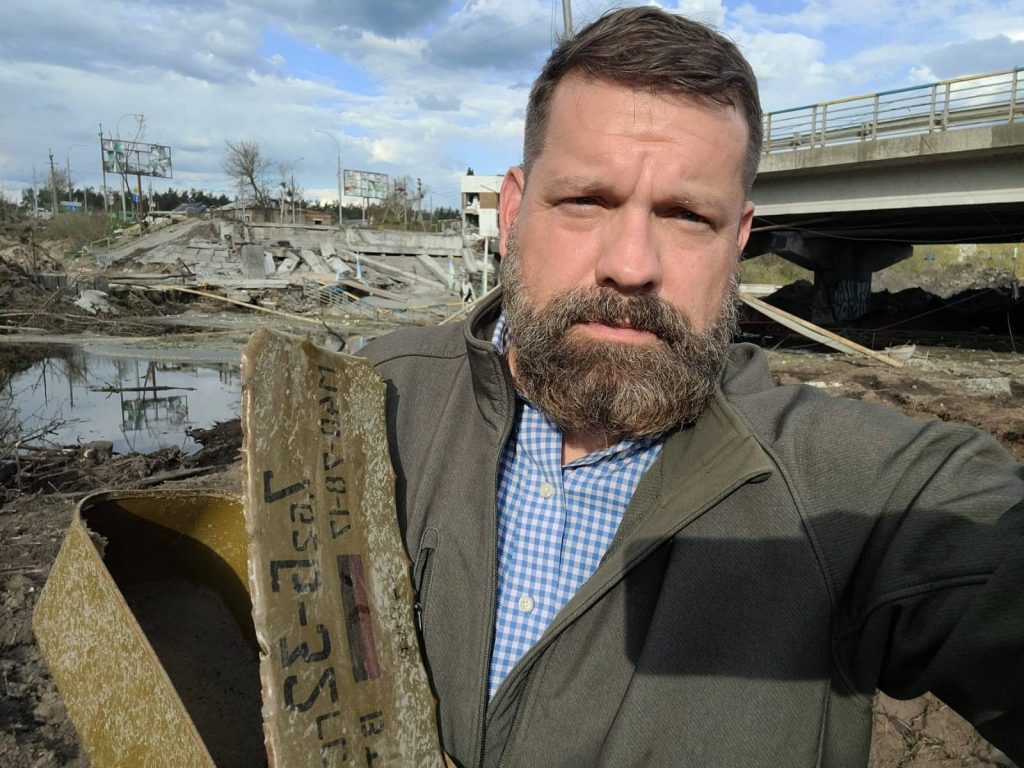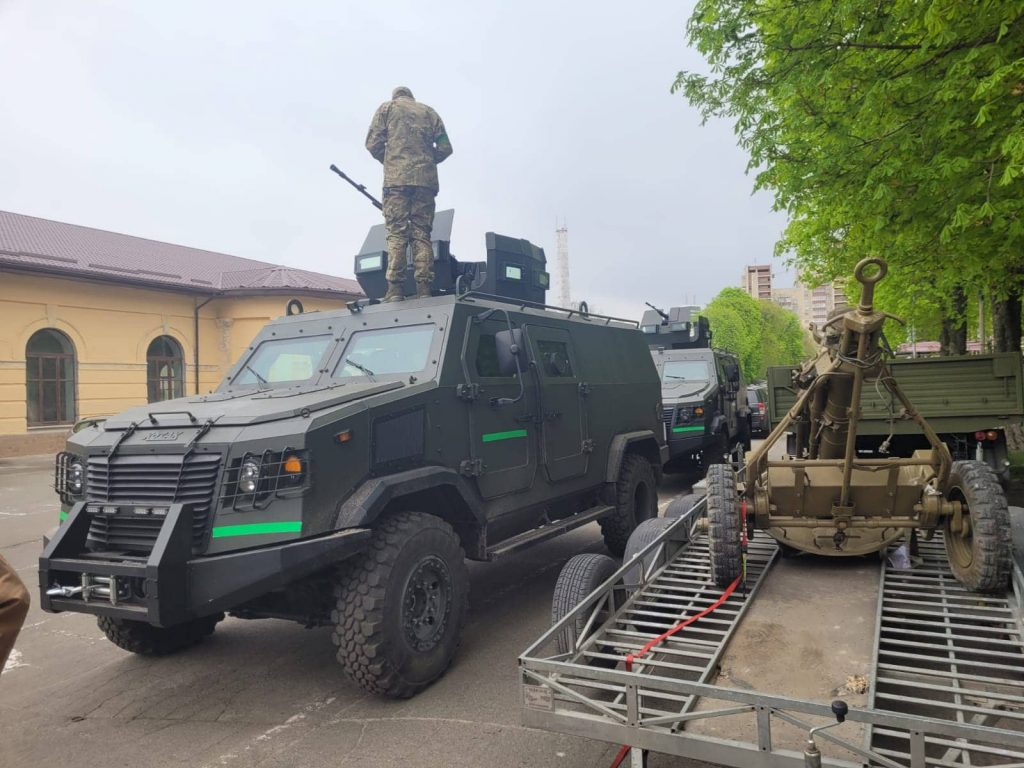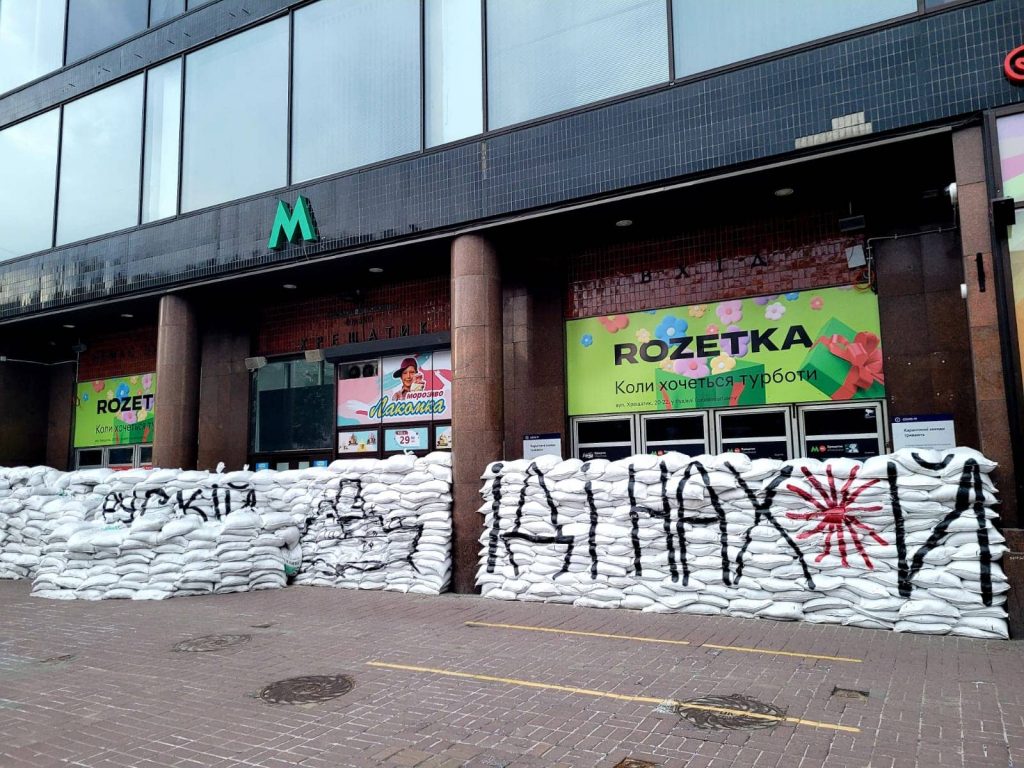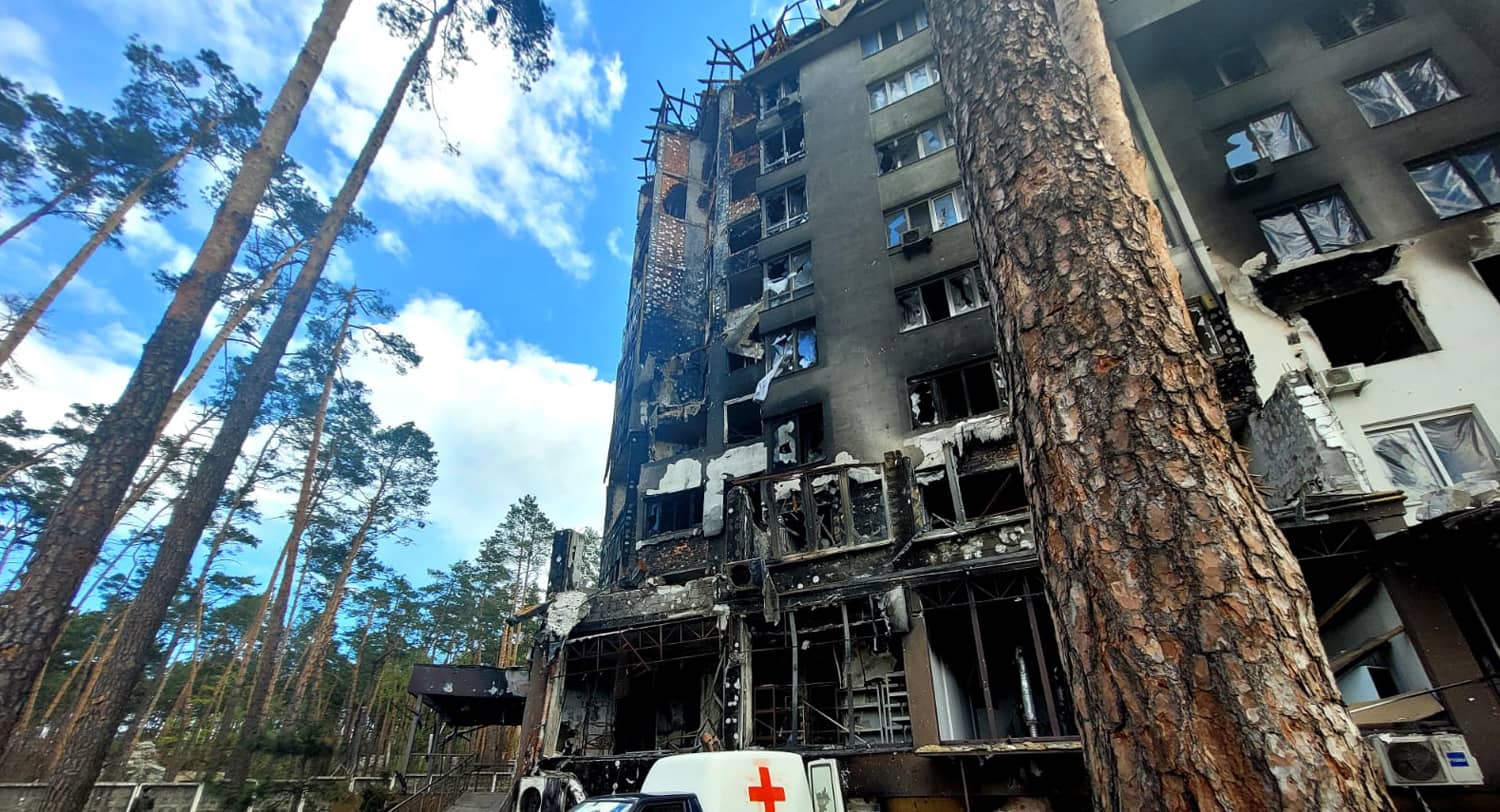Experience at the frontline of Ukraine’s ongoing effort to stop and repulse the Russian invasion proves that strategic depth still matters. What Israel knew all along is relevant once again. Seen from the professional angle of a former US congressman and fire-support officer, the war is increasingly becoming an all-out artillery duel along the entire frontier; but it is a new and different use of firepower than that of 20th century wars. This, in turn, redefines what capabilities are necessary for Ukraine to acquire if a better outcome is to be achieved.
As a former member of the House of Representatives’ Foreign Affairs Committee, I was honored to have the opportunity in April–May 2022 to meet and talk with Ukraine’s leadership—from the highest levels of their intelligence community to the small unit leaders at the front. When I say, “at the front,” I mean it literally, as my travels took me to within about 15 kilometers of Russia proper. As a former fire-support officer and artilleryman in the US Army, I had the unenviable opportunity to be on the receiving end of multiple cannon and rocket strikes conducted by the Russian military north and east of Kharkiv.
Under fire, one quickly learns to differentiate the sounds of incoming artillery from those of outgoing, and while US M-777 155mm howitzers are just being integrated in the Ukrainian order of battle, forces defending and reclaiming portions of Ukraine seem to have been giving as good as they got. The offensive to which we bore witness focused at the time on the village of Ruska Losovaya, a bit north of Ukraine’s second largest city, Kharkiv. On my return from the front, I overheard commentary on an international news broadcast that they were unable to substantiate claims by the Ukrainian Ministry of Defense that four villages in the area had been liberated, as no journalist had been able to make their way that far north. I chuckled as I had seen at least one of the liberated villages—claim substantiated.

Photo credit: Tom Garrett.
The reclaiming of villages outside of Kharkiv had a positive effect on morale for the soldiers on the ground, as well as for others across the globe. While this was of some value, it was not the primary goal of the efforts. Instead, what drove the offensive was the need to provide strategic depth. No other defensive position in modern history illustrates the urgency of strategic depth as does the defense of Israel, periodically challenged by a variety of adversaries. Physical distance and depth equate to options. Physical distance and depth equal time. Perhaps most importantly, physical distance and depth equal safety for civilian populaces, who neither volunteered nor trained for combat and live within range of indirect fires.
Despite being nearly 30 times larger than Israel, this is true also in Ukraine—particularly in population centers such as Kharkiv and Mykolayiv, which are major cities close to the fighting. The nature of the fighting has devolved largely from a 20th century mechanized fight on open ground to a running artillery battle with cities being prominent loci for transportation infrastructure.
The vital importance of cities is also heightened by the Ukrainian decision early in the conflict to use the aforementioned strategic depth to shape the battlefield as they conducted a series of withdrawals before the early Russian onslaught and hardened defenses in urban and near urban areas. Russia was dealt a series of embarrassing setbacks in places like Grozny 25 years ago, having top notch 20th century mechanized assets ground to dust by highly motivated but poorly equipped local militias in Chechnya. Apparently, the Ukrainians learned from this; ironically, the Russians did not.

Extensive battle damage was evident on the main supply routes of both hard and soft Russian assets outside of places like Irpin. The damage was disproportionately Russian and based on the comments of leaders present during these fights—as well as the evidence on the ground— Russian armor and mechanized forces attempted to secure locations with inadequate or no infantry support at all. Moreover, they often did so in a column formation from a single direction. While the British/Swedish next generation light anti-tank weapon (NLAW) has proven to be a particularly effective platform to engage Russian armor, the Russian lack of tactical proficiency created a scenario where any competently utilized modern anti-armor system would thrive. In the parlance of the artillery community, it was a target rich environment; in the words of a 19th century American, it was like shooting fish in a barrel.
This greatly reduced the effectiveness of Russian maneuver, and that takes us to where we are now: a massive artillery duel spread across a front of nearly 300 kilometers long. While former Soviet doctrine has emphasized the importance of massed artillery fires since World War II, this isn’t that. Some have characterized the massive volume of munitions exchanged as being similar to patterns of World War I, with massive barrages unleashed prior to attacks on killing fields like the Somme, but they too are mistaken. Instead, this is hybrid warfare, using old killing techniques that are both enhanced and degraded by new technological innovations.
Precision munitions mean that things like earthen trenches, modern camouflage techniques, and hardened fortifications are mitigated in the advantages that they afford. Counter-battery technology and the ubiquitous nature of unmanned platforms for surveillance create a battlefield where maneuver elements like infantry and armor are often static and hidden until an attack or counterattack is unleashed, while artillery units—not considered a traditional maneuver asset— must constantly move if they are to survive, gain advantage, and destroy the enemy.
As a result, the artillery barrage has remained, but the purpose is more often to attrit and erode enemy capability and less often to soften a target for an imminent attack. This is why the battles I witnessed north of Kharkiv were as much about creating space as they were about liberating villages. Every artillery system on the battlefield has a maximum range, and the more space the Ukrainians could create between their valued items—whether battle tanks or civilians—the less the Russian weapon systems could engage them and the more that they would survive.

Historically, an artillery raid, which is a foray by a unit that is largely or exclusively artillery, was rare and might be conducted to extend the range of a platform by moving, quickly and briefly, beyond the forward line of one’s own troops. Upon engaging a specific predetermined target, the artillery assets would then retreat quickly behind the safety of their own armor and infantry. In Ukraine, this is becoming the rule rather than the exception.
Large formations of Russian equipment—which would have conveyed genuine and terrifying combat power had they poured through the Fulda Gap during the Cold War—now seem to be more often the victims, rather than the victimizers, of their own massed presence. Artillery has always been the killer on the battlefield. At the American Artillery School at Fort Sill, it is taught that roughly two-thirds of all combat casualties inflicted by the US military since the American Civil War has been the result of artillery and fire-support assets (defined originally as cannon, rocket, and missile fire, but more recently expanded to include munitions delivered by both rotary and fixed-wing aircraft.) So yes, artillery has always been the killer, but the employment of artillery has changed. The old doctrine that called for Western leaders to “find, fix, and fight” the enemy had mechanized formations roving across an open space to engage and hold an enemy while artillery then could pound them into submission.
In Ukraine, anyone roving across an open space to find, fix, and fight is likely to be engaged and destroyed by artillery forces who finds them first.
The “why” of this is interesting to me.
The recent conflict between Armenia and Azerbaijan highlighted the changes in warfare that we are seeing on a much larger scale in Ukraine today. This unusual proxy fight pitted newer assets—from places like Turkey and Israel—against equipment provided by Russia and Iran, which on a 20th century battlefield, may well have been sufficient for a quick, successful, and decisive outcome. But alas, neither the Armenia–Azerbaijan fight nor this one occurred on a 20th century battlefield.
The ubiquitous nature of drones is a big part of the equation. The potential for drone use was hinted at during the American-led global war on terror, but the budget and technological wherewithal of the US government is not available in most instances. Because of this, as well as an interesting geopolitical paradigm as it relates to Turkey, other entities began developing very capable platforms that lacked the technical complexity and cost of the well-known Reaper and Predator platforms but had other advantages. Systems like the Turkish Bayaktar came to the fore as offering significant capabilities at a fraction of the cost, and while loiter times and ranges are diminished, an over-the-horizon capability isn’t what is called for to gain an upper hand in Ukraine.
It has been said that necessity is the mother of invention. Nowhere is this more true than on the battlefield. I have firsthand contact with individuals who employ commercially available platforms to pinpoint targets and to send near real-time information to artillery systems. Beyond the commercial options, the Bayaktars have a significantly better capability, able to loiter for hours on end, and deliver their own munitions.
What is missing is something in between such as a light drone employable from the bed of a pickup truck and operable by a young person who perhaps cut her teeth playing hours of Call of Duty on PlayStation. A platform like this would have a couple of hours of loiter time and the capability to carry four to eight munitions no more complex than a 60mm mortar round or a 40mm grenade. The effectiveness of this sort of thing bridges the gap between the commercially available systems and the Bayaktar, vastly increases lethality and responsiveness of fires, and creates an even more hostile and unsustainable battlefield for the sort of conventional forces that Russia relies upon. It also levels the playing field almost immediately, as we saw in the conflict between Azerbaijan and Armenia, and allows for the targeting of specific assets in a more timely manner, as we have seen with the disproportionate number of high-ranking Russian officers who have lost their lives in Ukraine.

To be fair, this has been Western doctrine for over 50 years. I know this because back when I was a junior officer, we were trained that in the West, we encourage and empower junior leaders, but this was not the case in the Eastern bloc. By their nature, totalitarian regimes exact a toll on those vested with power when they fail. This results in leaders clinging closely to the metaphorical controls and disincentivizes initiative. The results are that while the “next man up” mentality is natural in Western doctrine, and often units excel even after the loss of a leader, in Eastern doctrine, to the contrary, decapitated units often seize up and stall.
This creates a road map for success. This fight is already becoming an artillery fight, noting again that the definition of this has grown to include cannon, rocket, and missile fires as well as munitions delivered by fixed and rotary-wing platforms. Obviously by extension, drones become integrated into the fires plan. So, knowing that the enemy is adhering to a doctrine that seems to fit in despotic regimes, the artillery targeting process should become one where leaders are disproportionately targeted, as the positive outcomes will mirror the disproportionate emphasis.
To be fair, it seems that the Ukrainians are already doing this. The point is that they could do it much better with better assets.
For all the noise made about the delivery of multiple launch rocket systems (MLRS) platforms to Ukraine, these really only help to win the counter battery fight, which is being fought as a smaller part of the larger fight to control the ground. If the fight is artillery-centric, one way to win it is to destroy the enemy’s ability to deliver accurate predicted fires. MLRS helps with that for sure, but to win the macro fight, targeting leadership is more realistic. The reality is that currently—despite influxes of systems from the M777 from the US to Dana howitzers from the Czechs to the ubiquitous 2S1s from other former Warsaw Pact nations—the Russians aren’t going to run out of gun tubes or ammunition in the foreseeable future. They may very well run out of competent leadership on the ground, or even the morale required to move and seize real estate though.

So, yes, the counter battery fight is important, and losing it may immeasurably cost Ukraine, but winning it alone doesn’t win the war. Ukraine must hold its own in this arena; it wins not by massed fires, but by better, more responsive targeting that allows it to get the proverbial bang for its buck while fighting an opponent who has been stockpiling 122mm and 152mm ammunition for decades. The way to get this bang for the buck (pun entirely intended) is twofold. One is counter-battery radars like the ANTPQ-36 and 37s recently earmarked for Ukraine, which, while receiving far less attention than the M777 and MLRS donations, I would say is at least equally as important. The other is by filling the drone void between the DJIs that have half-an-hour of loiter time and a range of a few kilometers and the Bayaktars which, despite being affordable relative to the Reaper and Predator platforms, are not available in quantities sufficient for the mission, nor expendable enough to pursue the targets of opportunity like a brigade commander at a bridgehead that may arise on short notice.
South Korea, Israel, and the US are all in some stage of fielding systems such as these, with the Koreans perhaps in the best position to fill this need in the near term, should they choose to, and should the Ukrainians make the right requests. These small to mid-sized systems carrying four to eight 60mm sized munitions would individually be able to conduct precision strikes on high value and high payoff targets, and if employed properly could single-handedly take a cannon platoon or even battery out of play. This would not only help win the macro fight but create a much higher probability of winning the aforementioned counter-battery micro fight. In short, these items—in conjunction with continued success in intelligence sharing in the targeting realm—would go a long way toward creating a scenario in which despite the conventional artillery advantage in numbers that Russia will continue to enjoy, they would be unable to win due to the inability to leverage these numbers or lead the soldiers who operate the systems. In short, counter-battery radar and midsized drones have the potential to become to this conflict what the M1 Garand rifle was to World War II.

